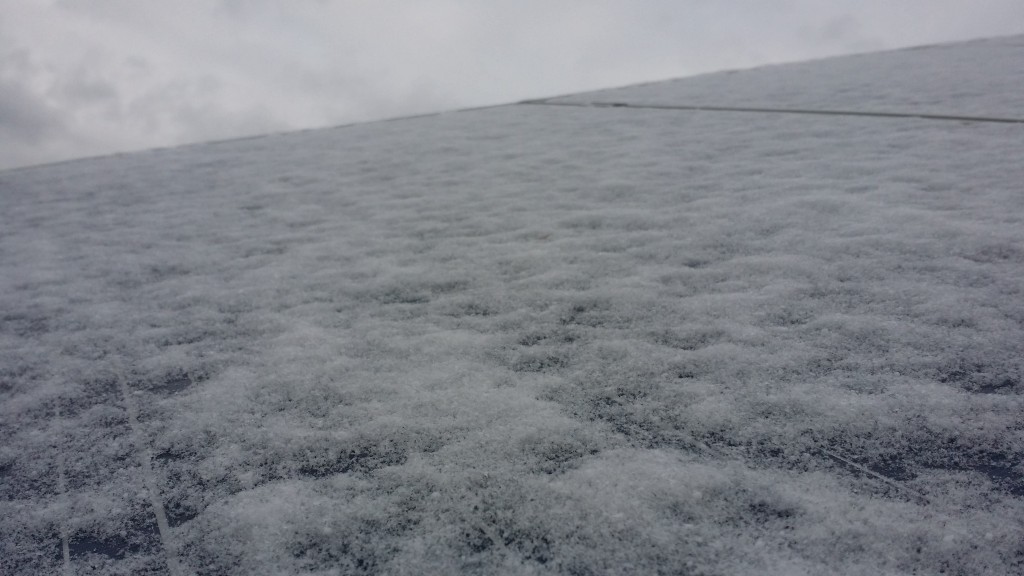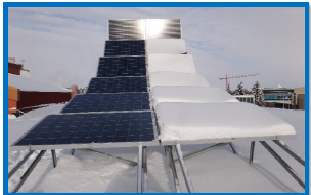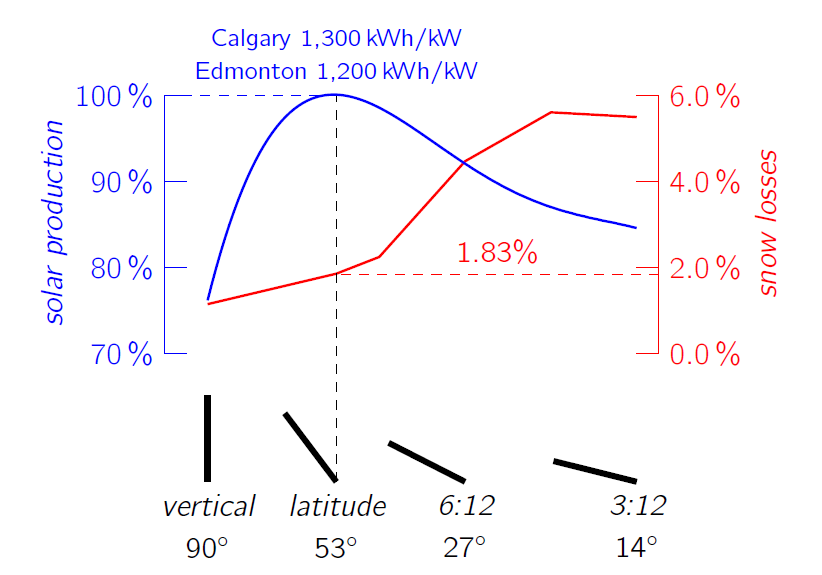
A lot has been speculated about how snow impacts solar production in Alberta. In this blog post I’ll discuss the results of the effect of snow and tilt on the output of NAIT’s Solar Reference Array, which showed that snow incurred no more than 6% of loss on annual output.
Cold is good!
A 250W module (commonly referred to as a solar panel) or a 3kW array are going to produce said power under standard conditions which are a full sun intensity and a cell temperature of 25 degree Celsius (amongst other conditions). Higher operating temperatures lead to lower solar production and so lower operating temperatures lead to higher solar production.
This means that although solar panels receive less sunlight in the winter they produce more energy over the amount of sunlight they receive compared to warmer seasons of the year.
Production losses incurred by snow
The Northern Alberta Institute of Technology (NAIT) installed two solar sub-arrays facing south as shown below. One sub-array had its snow actively removed from it; the other sub-array was setup as the control and had no snow removed from it.

The NAIT Solar Reference Array which was built to study how snow impacts solar production in Alberta – The subarray on the left has snow actively removed from it, while the one on the right acts as a control.
A report was published after one year of observation and showed that losses incurred by snow are limited to a maximum of 6% of annual production. Below is a plot of the array’s solar production and snow losses with increasing pitch. The angles mentioned in the report range from 14 degrees to 90 degrees.
How snow impacts solar production in Alberta

How Snow Impacts Solar Production in Alberta
First of all it’s important to note that roofs that have pitches that are close to 12:12 experience the maximum annual solar output which is about 1,300 kilowatt-hours per kilowatt per year in Calgary, or 1,200 kWh per kW per year in Edmonton. If your roof only has a slight pitch of say, 3:12 your annual production is only 15% less. Interesting snow had the biggest impact on flat pitched roofs, specifically the 18 degree tilt. Panels flatter than that suffered less from snow because they didn’t capture that much winter sunlight to begin with given how high up they are pointed in the sky.
It’s not a big deal how snow impacts solar production
Solar is a great resource in Alberta and cold temperatures in and of themselves are good for solar production. Whilst the impact of snow has a detrimental effect on a solar panel’s power production, it incurs no more than 6% in losses of total annual production. This is because we are so high up north that most of the solar production is concentrated between the months of March and September.
